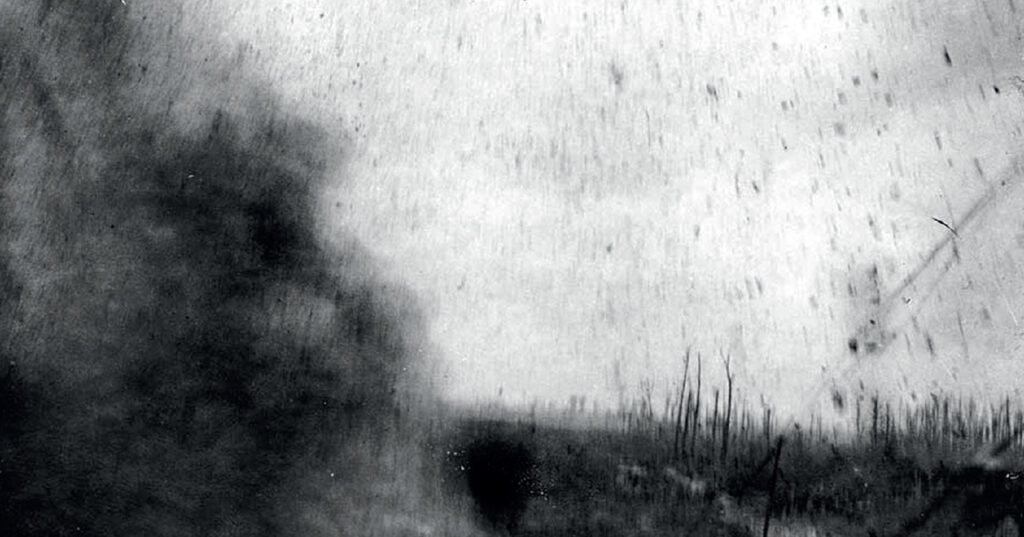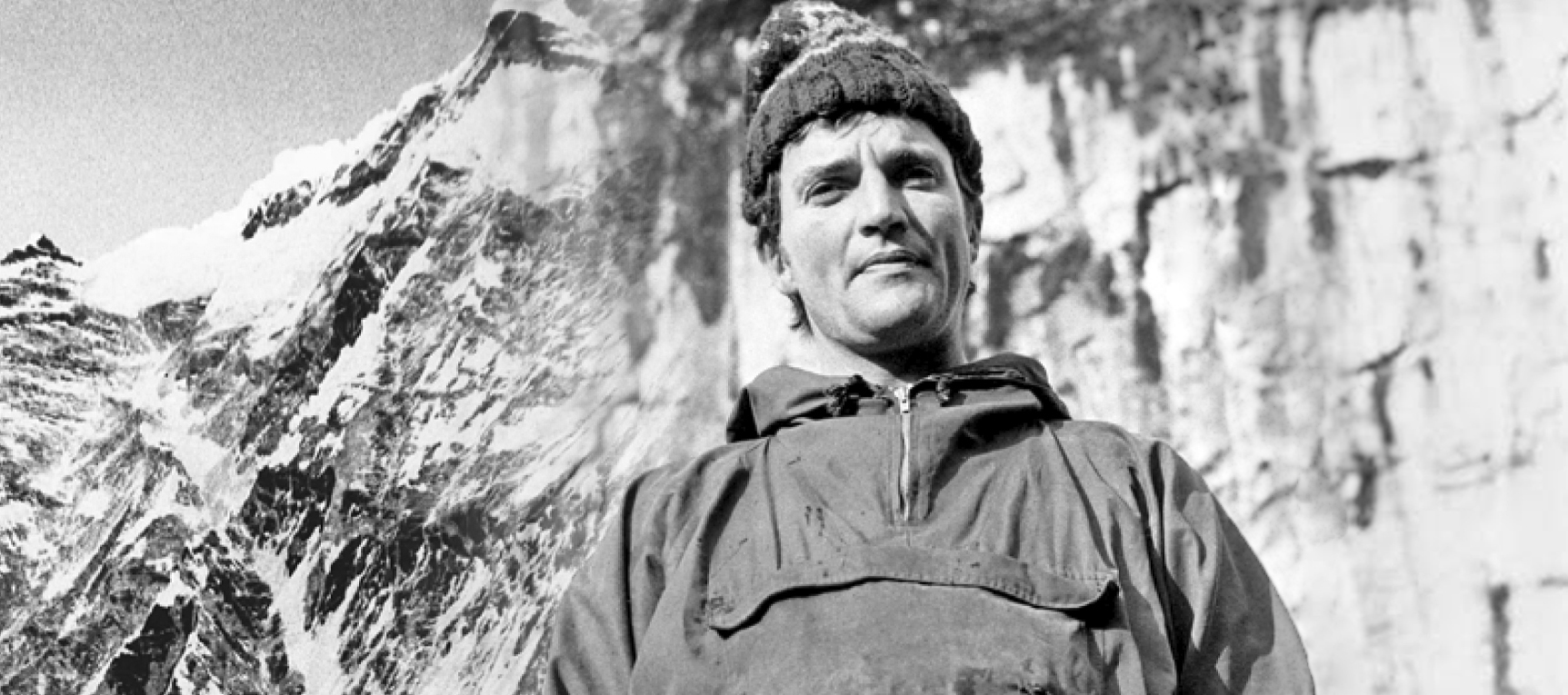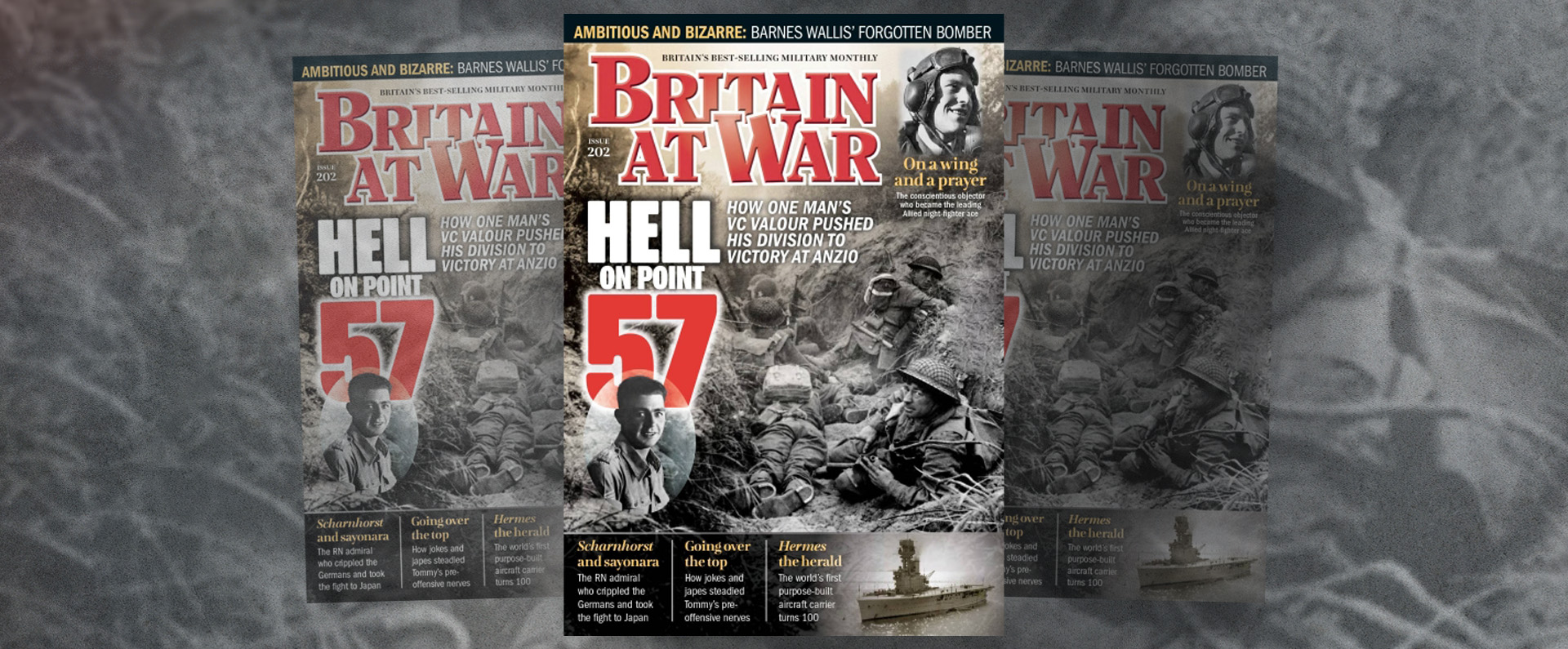
Published in Britain at War in January 2018.
Lieutenant Colonel Philip Bent VC, DSO: leadership
Philip Eric Bent was born in Halifax, Nova Scotia, Canada, on January 3 1891. He was the youngest of three children born to Frank Bent, a superintendent in the railway mail service, and his English wife, Sophia (née Harvey).
While living in Canada, Philip attended Harrow House School. When he was 12, he came to Britain with his mother and he attended the Royal High School in Edinburgh and, later, Ashby-de-la Zouch Boys’ Grammar School (now Ashby School). In January 1909 and having just turned 18, he joined HMS Conway, the Mersey-based Merchant Navy ship, with a view to pursuing a career at sea.
Bent, a talented boxer, gained his second mate’s ticket in 1914. After the outbreak of the Great War in August 1914, it might have seemed more logical for him to join the Royal Navy but instead, on October 2 1914, he enlisted in the Army, serving initially as a private in the 1st City of Edinburgh Battalion, Royal Scots.
However, in November 1914, he was granted a temporary commission in the Leicestershire Regiment. After being promoted to lieutenant in June 1915, he transferred to the 9th Battalion (from the 7th) and he sailed to France the next month.
As an able solider and talented leader, he applied for a permanent commission in the Army and in April 1916 he was granted his wish and given the temporary rank of captain.
Bent was Mentioned in Dispatches (MiD) in June 1916 before being promoted to temporary major in July, the same month that he saw action at the Somme. In October, he was wounded in action, receiving gunshot wounds to his neck.
Bent was evacuated to hospital in Boulogne but he was back in action within ten days. On October 26 1916, he was appointed acting lieutenant colonel, ending a remarkable series of promotions from the rank of private just two years earlier.
In May 1917, he led his unit into action for the first time at Bullecourt, France. His courage and leadership skill were rewarded with a second MiD in May and the award of the Distinguished Service Order (DSO) in June.
Bent’s VC action took place in Belgium, on October 1, 1917. Two months into the Third Battle of Ypres (later better known as the Battle of Passchendaele), and having been forced back by a sustained enemy counter-attack, Bent rallied his men close to the town of Zonnebeke.
Over the next hour or so, Bent would display such bravery near Polygon Wood that it would later result in the award of a posthumous Victoria Cross (VC).
The citation for Bent’s VC, announced on January 11 1918, takes up the story: “The situation was critical owing to the confusion caused by the attack and the intense artillery fire. Lt.-Col. Bent personally collected a platoon that was in reserve, and together with men from other companies and various regimental details, he organised and led them forward to the counter-attack, after issuing orders to other officers as to the further defence of the line. The counter-attack was successful and the enemy were checked.
“The coolness and magnificent example shown to all ranks by Lt.-Col. Bent resulted in the securing of a portion of the line which was of essential importance for subsequent operations.
“This very gallant officer was killed whilst leading a charge which he inspired with the call of ‘Come on the Tigers’.”
Bent, who was single and one of the youngest men ever to hold his rank, had died aged 26. He became the first Canadian of the campaign to receive the VC, and one of 70 Canadians who eventually received the award during the Great War. Bent has no known grave and he is commemorated on the memorial wall at Tyne Cot Cemetery, Belgium.
His VC and earlier DSO were presented to his mother by George V at an investiture at Buckingham Palace on March 2, 1918. Mrs Bent later sent her son’s decorations to what is now Ashby School for “sake-keeping and safe-guarding”. The school, in turn, later permanently loaned the medals to the Royal Leicestershire Regiment Museum.
In October 2017 representatives from both the Royal Leicestershire Regiment and the Friends of HMS Conway laid a wreath at the service of remembrance and dedication organised by Ashby-de-la Zouch Town Council. Two of Bent’s relatives attended the service: Keith Willis, his great nephew and, Liam Willis, his great, great nephew.
The guests also included Kenneth Hillier, the author of a new book “Come on the Tigers!” The Story of Philip E. Bent VC, DSO”, which is published by Ashby Museum.
Mr Hillier, formerly both the head of history and deputy headmaster of what is now Ashby School, said of his book: “Philip Bent was a very brave young man, with undoubted qualities of leadership. It has been a very humbling and moving experience researching his life.”
Mr Hillier kindly asked me to write the Foreword to his book after visiting the Lord Ashcroft Gallery at the Imperial War Museum, which is home to my collection of more than 200 VCs, the largest in the world.
I do not own Bent’s medal group. However, as someone committed to championing bravery, I felt privileged, through the Foreword, to pay a personal tribute to this officer’s immense courage. I was delighted, too, that his self-sacrifice was so widely acknowledged a century after his death.
Download a PDF of the original Britain at War article
For more information, visit:
LordAshcroftOnBravery.com


